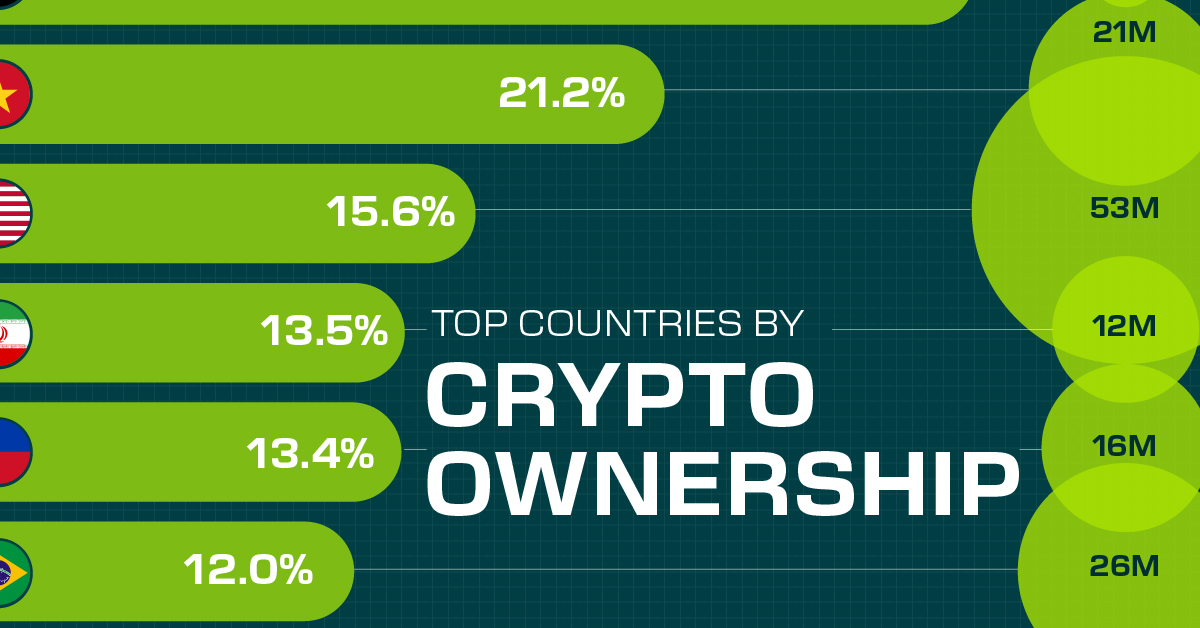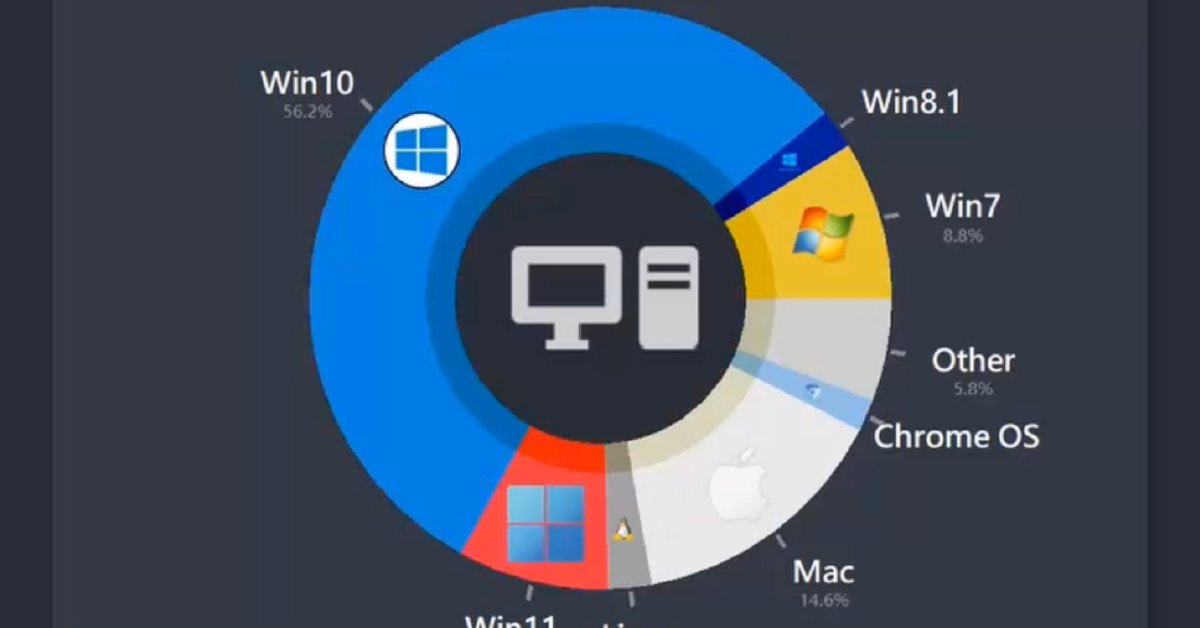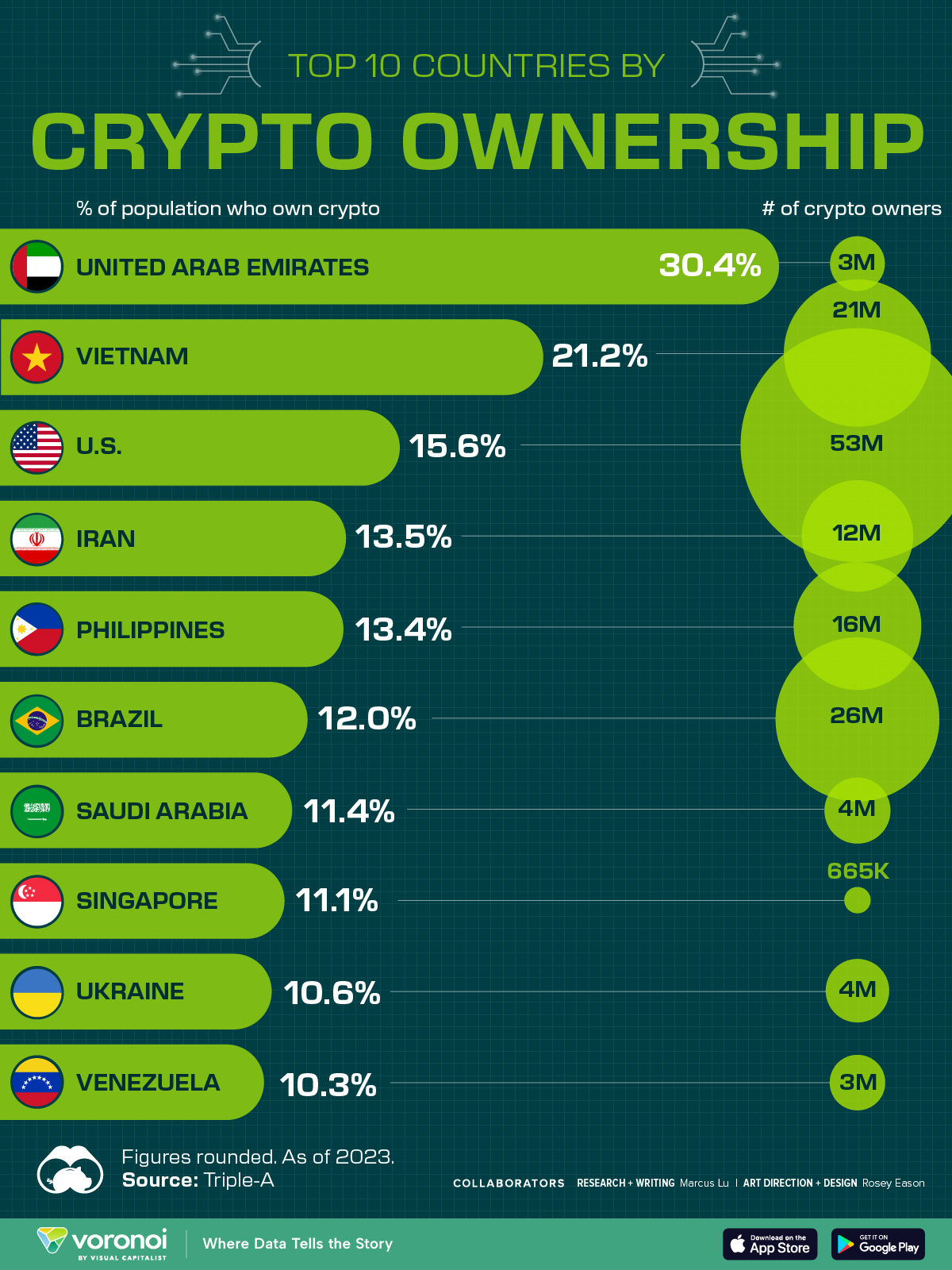Technology
Animated: Most Popular Desktop Operating Systems Since 2003
The Most Popular Desktop Operating Systems Since 2003
Mobile phones might be the most common way of getting online today, but the digital and internet era started for most people with the humble desktop computer.
And over the past 20 years, a long list of operating systems (OS) have been used to run the most popular desktop computers.
Sjoerd Tilmans has created an animated chart showing the rise and fall in market share of popular desktop operating systems over the period of May 2003 to June 2022, using data from W3Schools and GS Stat Counter.
Microsoft’s Monopoly on the Most Popular Desktop OS
The story of the desktop OS market is a story of Microsoft’s explosive growth and market dominance.
In the 1980s, the fledgling company signed a partnership with personal computer behemoth IBM. Microsoft would supply IBM with an operating system for its computers, MS-DOS, and receive a royalty for every computer sold.
Those royalties boosted Microsoft’s coffers. And its release of Windows—a more visual interface than DOS—helped them grab hold of the PC market. The late 1990s and early 2000s saw different versions of Windows capture the market:
- Windows 95:
The now famous toolbar and Start menu made their debut here. The version also would launch Internet Explorer, once the world’s most popular browser. - Windows 98:
An upgrade to ‘95 which supported more hardware like USBs and connecting more than one monitor.
- Windows XP:
XP quickly became a fan-favorite because of its stability, and a hit with both commercial and personal computer clients. Windows XP gained market share steadily upon release in 2001, quickly becoming the most popular desktop OS with a peak of 76% market share in 2007.
| Operating System | Peak Market Share | Year |
|---|---|---|
| Win 95 | 57.4% | 1998 |
| Win 98 | 17.2% | 1999 |
| Win XP | 76.1% | 2006 |
Microsoft doubled down on their next releases from the end of the 2000s to 2020, with some misses (Windows Vista) and some hits (Windows 10). Here’s a look at the most popular ones:
- Windows 7:
Released as the successor to the poorly received Windows Vista, it kept the same visual style (“Aero”) but greatly improved performance and stability from Vista’s benchmarks. In 2011, Windows 7 passed XP to become the most popular desktop OS. - Windows 8 and 8.1:
Created for tablet-desktop integration, just as Microsoft released the companion Surface tablet. The beloved Start menu was replaced (an unpopular decision) and tile-based visual style introduced. However the dramatic differences between the desktop and tablet versions made for a steep learning curve, with the 8.1 release reintroducing the Start button. - Windows 10:
The follow-up to Windows 8 kept the the tile-based appearance but focused on a desktop-oriented interface with quality of life updates. By 2018, Windows 10 had become the most popular desktop OS, eventually peaking at 61% market share at the start of 2022.
| Date | Peak Market Share | Year |
|---|---|---|
| Win 7 | 55.1% | 2014 |
| Win 8 | 8.1% | 2013 |
| Win 8.1 | 16.8% | 2015 |
| Win 10 | 61.2% | 2022 |
The most recent version of Windows released, Windows 11, had updated graphics styling, widget integration, and introduced Microsoft’s latest internet browser Microsoft Edge. But it received a mixed response and slow uptake compared to Windows 10, gaining a market share of 8.3% by June 2022.
Microsoft Vs. Other Desktop OS Contenders
As of February 2023, Microsoft had a comfortable lead in the desktop OS market, holding nearly 72% of the market.
| Company | OS Name | Feb, 2023 Market Share |
|---|---|---|
| Microsoft | Windows | 72.0% |
| Apple | macOS | 16.3% |
| OpenSource | Linux | 2.9% |
| ChromeOS | 2.9% | |
| Unknown | Unknown | 6.0% |
In a distant second is Apple’s macOS. The most profitable company in the world might make most of their money from smartphones, but Apple has still managed to carve out a small but sturdy segment of the desktop operating OS market. It reached its peak of 19% in April 2020.
The other tech giant in the desktop OS game is Alphabet, whose ChromeOS is unique for using an internet browser (Google Chrome browser) as its primary interface. Generally packaged as a simpler and cheaper device option—it was primarily released with inexpensive laptops called “Chromebooks”. More recently, Alphabet announced a version that can be installed on existing computer hardware in 2022.
Compared to the commercially released OS above, Linux is completely free to download and use, and is the largest open-source software project in the world. Although the OS is only used in about 3% of desktop computers, it was also the basis of Android and ChromeOS, and is the most-used OS on devices with embedded software—routers, smart home devices, cars, and even a few spacecraft (The SpaceX Falcon 9, for example).

This article was published as a part of Visual Capitalist's Creator Program, which features data-driven visuals from some of our favorite Creators around the world.
Technology
Countries With the Highest Rates of Crypto Ownership
While the U.S. is a major market for cryptocurrencies, two countries surpass it in terms of their rates of crypto ownership.

Countries With the Highest Rates of Crypto Ownership
This was originally posted on our Voronoi app. Download the app for free on iOS or Android and discover incredible data-driven charts from a variety of trusted sources.
This graphic ranks the top 10 countries by their rate of cryptocurrency ownership, which is the percentage of the population that owns crypto. These figures come from crypto payment gateway, Triple-A, and are as of 2023.
Data and Highlights
The table below lists the rates of crypto ownership in the top 10 countries, as well as the number of people this amounts to.
| Country | % of Population Who Own Crypto | # of Crypto Owners |
|---|---|---|
| 🇦🇪 United Arab Emirates | 30.4 | 3M |
| 🇻🇳 Vietnam | 21.2 | 21M |
| 🇺🇸 U.S. | 15.6 | 53M |
| 🇮🇷 Iran | 13.5 | 12M |
| 🇵🇭 Philippines | 13.4 | 16M |
| 🇧🇷 Brazil | 12 | 26M |
| 🇸🇦 Saudi Arabia | 11.4 | 4M |
| 🇸🇬 Singapore | 11.1 | 665K |
| 🇺🇦 Ukraine | 10.6 | 4M |
| 🇻🇪 Venezuela | 10.3 | 3M |
Note that if we were to rank countries based on their actual number of crypto owners, India would rank first at 93 million people, China would rank second at 59 million people, and the U.S. would rank third at 52 million people.
The UAE Takes the Top Spot
The United Arab Emirates (UAE) boasts the highest rates of crypto ownership globally. The country’s government is considered to be very crypto friendly, as described in Henley & Partners’ Crypto Wealth Report 2023:
In the UAE, the Financial Services Regulatory Authority (FSRA-ADGM) was the first to provide rules and regulations regarding cryptocurrency purchasing and selling. The Emirates are generally very open to new technologies and have proposed zero taxes for crypto owners and businesses.
Vietnam leads Southeast Asia
According to the Crypto Council for Innovation, cryptocurrency holdings in Vietnam are also untaxed, making them an attractive asset.
Another reason for Vietnam’s high rates of ownership could be its large unbanked population (people without access to financial services). Cryptocurrencies may provide an alternative means of accessing these services without relying on traditional banks.
Learn More About Crypto From Visual Capitalist
If you enjoyed this post, be sure to check out The World’s Largest Corporate Holders of Bitcoin, which ranks the top 12 publicly traded companies by their Bitcoin holdings.
-

 Technology1 week ago
Technology1 week agoCountries With the Highest Rates of Crypto Ownership
-

 Mining6 days ago
Mining6 days agoVisualizing Copper Production by Country in 2023
-

 Politics7 days ago
Politics7 days agoCharted: How Americans Feel About Federal Government Agencies
-

 Healthcare1 week ago
Healthcare1 week agoWhich Countries Have the Highest Infant Mortality Rates?
-

 Demographics1 week ago
Demographics1 week agoMapped: U.S. Immigrants by Region
-

 Economy1 week ago
Economy1 week agoMapped: Southeast Asia’s GDP Per Capita, by Country
-

 Automotive1 week ago
Automotive1 week agoHow People Get Around in America, Europe, and Asia
-

 Personal Finance1 week ago
Personal Finance1 week agoVisualizing the Tax Burden of Every U.S. State













